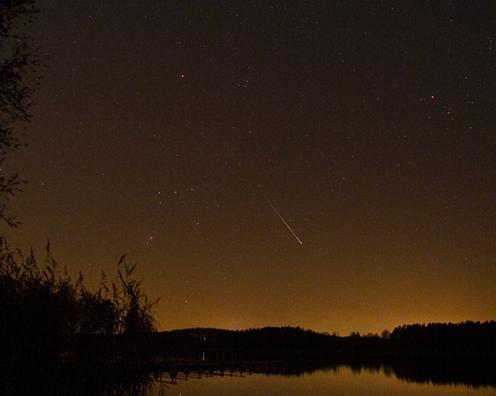Leonid meteor shower

|
|
Leonid meteor shower |

|

Picture of a Leonid meteor taken in Vallentuna, Sweden, during last year's shower. Credit: P-M Hedén, see www.clearskies.se.
Once again, it is time for the Leonid meteor showers between November 14-20. For a chance to see unusually many so called shooting stars, look to the south on the early morning of November 18 2007 when it will reach its maximum. Of course there has to be clear weather conditions (see SMHI's webpage).
Each year around November 18, the Earth collides with a cloud of dust that originally comes from the comet Tempel-Tuttle. The comet travels around the Sun in an elongated elliptical orbit. Every time it gets close to the Sun, which happens every 33 years, this dirty snowball partially melts and a large amount of water and dust grains leave the comet. This dust then trails the comet in its orbit. Every time the Earth passes through the comet's orbit, which happens once a year, it collides with these dust grains which then give rise to the meteor shower.
The dust is mostly concentrated in the vicinity of the comet in its orbit. Therefore, the meteor showers are most intense roughly every 33 years and the years that follow. Last time this happened was early this decade after the comet Tempel-Tuttle passed the Sun in 1998. In 1999, several thousand meteors per hour were reported. After the previous passage in 1966, up to 150 000 meteors per hour were seen. Throughout history, only the shower of 1833 can compare to this, with allegedly up to 100 000 meteors per hour. What the Leonids offer this year remains to be seen.